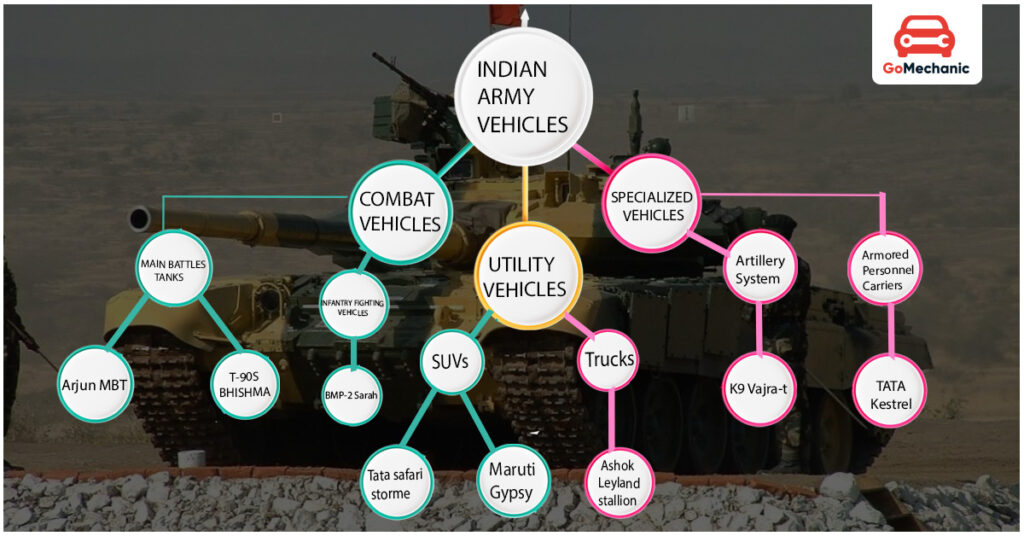The Indian Army doesn’t just march. It moves. Over sand, ice, rivers, and rock, it moves. It cuts through jungles. Climbs mountains. Stays in deserts. Indian Army vehicles aren’t ordinary—they’re lifelines. And weapons. Machines designed to endure.
What follows is a journey into that world. Every type. Every model. Every bolt. Get ready. This is going to be big.
Chapter One: The Iron Giants
Main Battle Tanks (MBTs). These are the Indian Army’s armored fists. Built to destroy. Designed to survive.
Arjun MBT
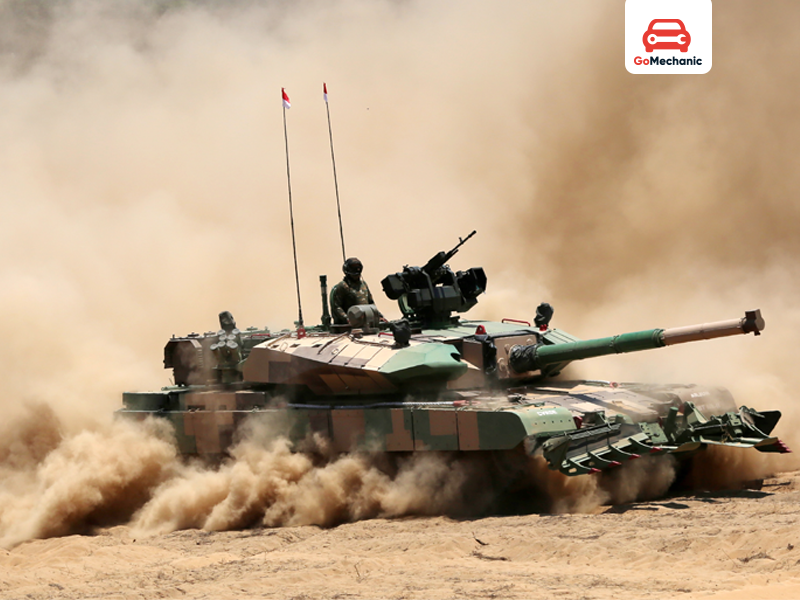
- Made in India. For India.
- Weight: 58.5 tons.
- Gun: 120 mm rifled. It doesn’t miss.
- Armor: Kanchan composite. A layered defense system that can shrug off missiles.
- Engine: A beastly 1,400 hp diesel that pushes this tank to 72 km/h.
- Crew: Four men. One mission.
It’s a fortress. On tracks. Ready to dominate.
T-90S Bhishma
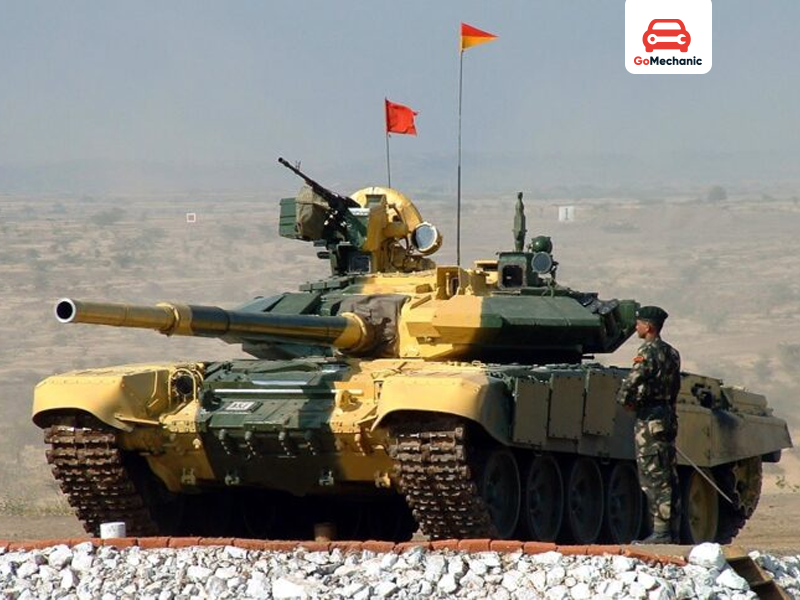
- A Russian design. An Indian legend.
- Weight: 46.5 tons. Lighter than the Arjun. Faster, too.
- Gun: 125 mm smoothbore. Accurate, deadly, and fast-firing.
- Armor: Kontakt-5 reactive. Explodes outward to stop incoming missiles.
- Engine: 1,000 hp diesel. Built for endurance.
- Special Tech: The Shtora-1 defense system jams enemy guided missiles.
This one’s the workhorse. The mainstay. It moves fast. Hits hard. Defends better.
T-72 Ajeya
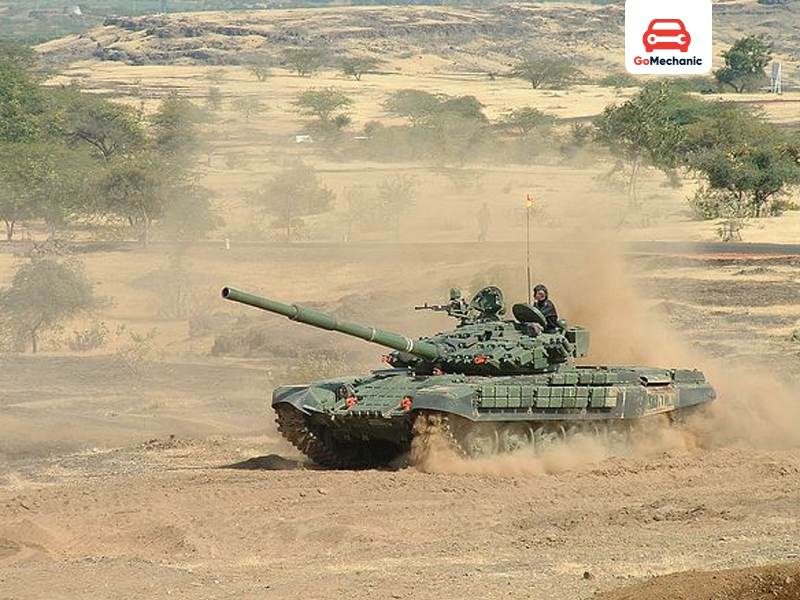
- An older design. Still a fighter.
- Weight: 41.5 tons.
- Gun: 125 mm smoothbore.
- Armor: Standard composite.
- Engine: 780 hp diesel. A smaller heart, but still strong.
Chapter Two: The Fighting Companions
Combat isn’t just about tanks. It’s about the Indian army vehicles that carry troops. Support them. Fight alongside them.
BMP-2 Sarath
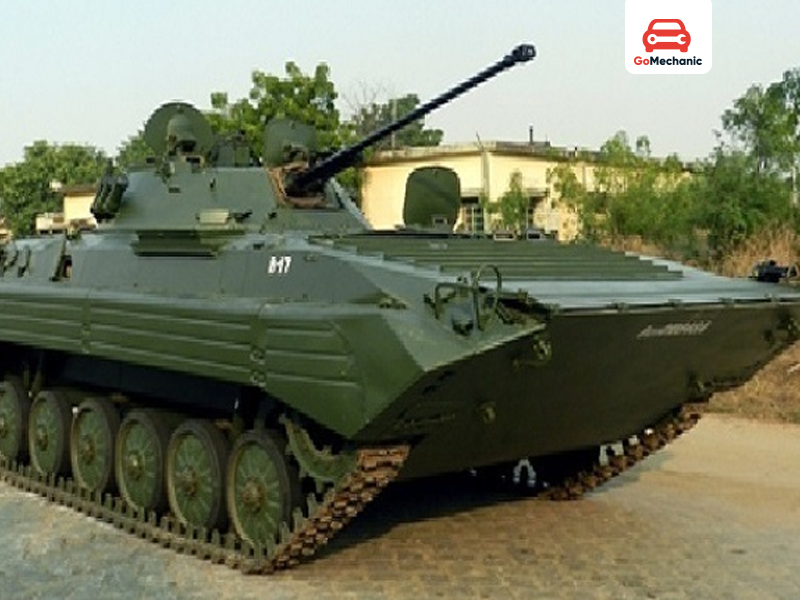
- A true companion. This Infantry Fighting Vehicle (IFV) is built for the frontlines.
- Weight: 14.3 tons.
- Gun: 30 mm autocannon. Rapid and destructive.
- Missiles: Anti-tank guided missiles (ATGMs) for taking out enemy tanks.
- Armor: Welded steel. Enough to protect but light enough to move.
- Engine: 300 hp diesel. It’s amphibious. It floats.
TATA Kestrel (WhAP)
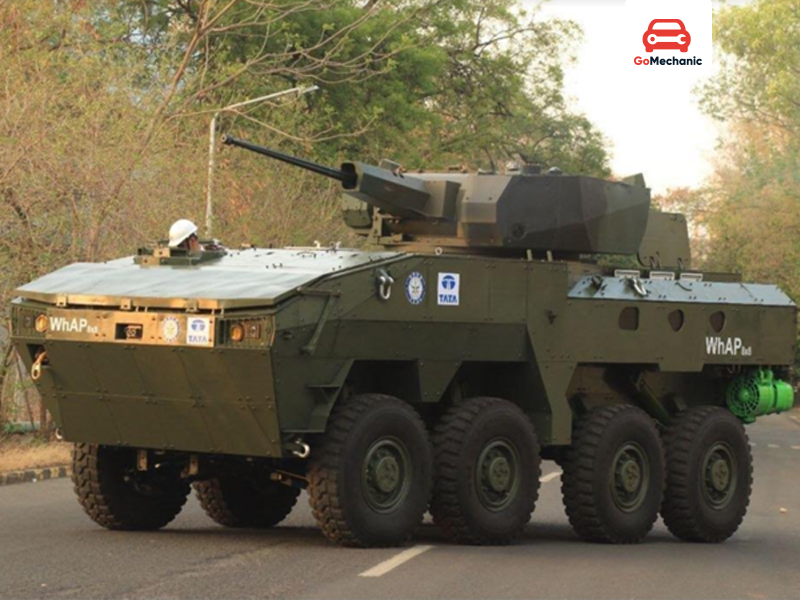
- India’s answer to modern APCs (Armored Personnel Carriers).
- Weight: 25 tons.
- Armor: Modular. Customizable for threats.
- Weaponry: 30 mm cannon. Remote-controlled.
- Engine: 600 hp diesel.
- Troop Capacity: 12 soldiers. Fully equipped.
It’s flexible. Built for urban warfare. Rural skirmishes. Everything in between.
Chapter Three: The Backbone
The Indian Army doesn’t just fight. It supports. It moves supplies, soldiers, and everything else. That’s where the utility vehicles come in. Some of the popular utility Indian army vehicles names can be seen below.
Tata Safari Storme GS800
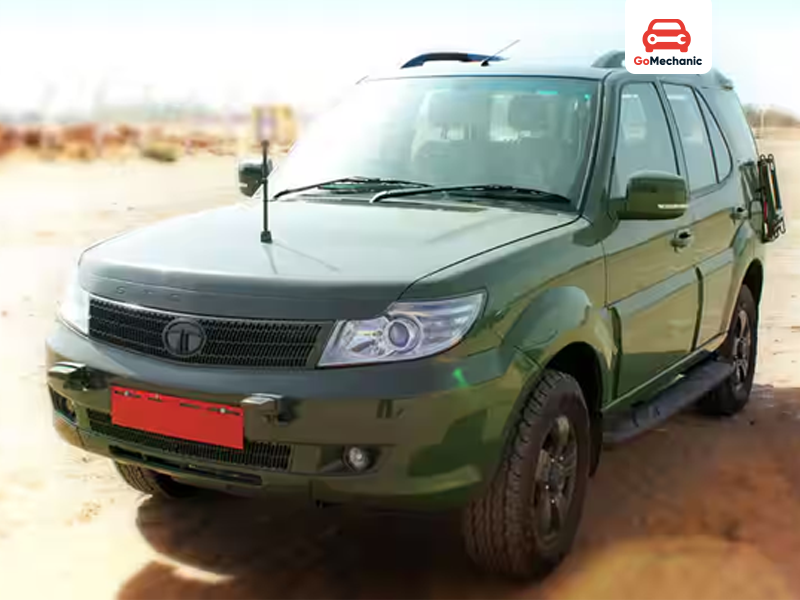
- The modern army SUV. Rugged. Reliable.
- Engine: 2.2L VARICOR diesel, producing 154 hp.
- Drive: 4×4. All-terrain.
- Capacity: Five personnel. And their gear.
- Top Speed: 160 km/h. Swift for an SUV this tough.
Why was it chosen? Because it’s an upgrade. Better than the Maruti Gypsy. More powerful. More comfortable. It’s built to last. And it looks the part.
Do read: Tata Safari History | The Evolution of an SUV Icon
Ashok Leyland Stallion
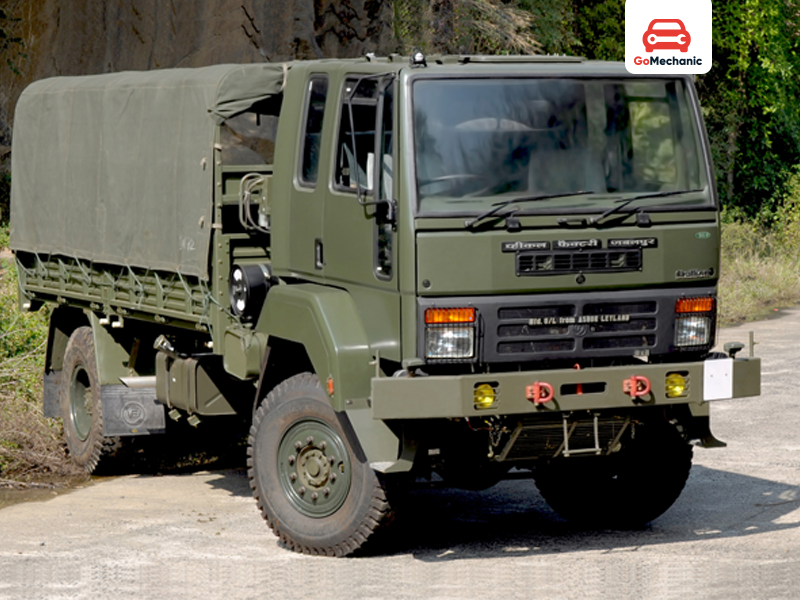
- The ultimate truck. Multipurpose. Modular.
- Engine: 180 hp diesel.
- Capacity: 7.5 tons. Or a full squad of troops.
- Variants: Troop carriers, fuel tankers, water bowsers, recovery vehicles.
This is the lifeblood. The Stallion moves everything the army needs. And it does it without complaint.
Chapter Four: The Legends
Some Indian Army vehicles names have achieved legendary status. Vehicles like the Maruti Gypsy are a symbol of resilience and strength.
Maruti Gypsy
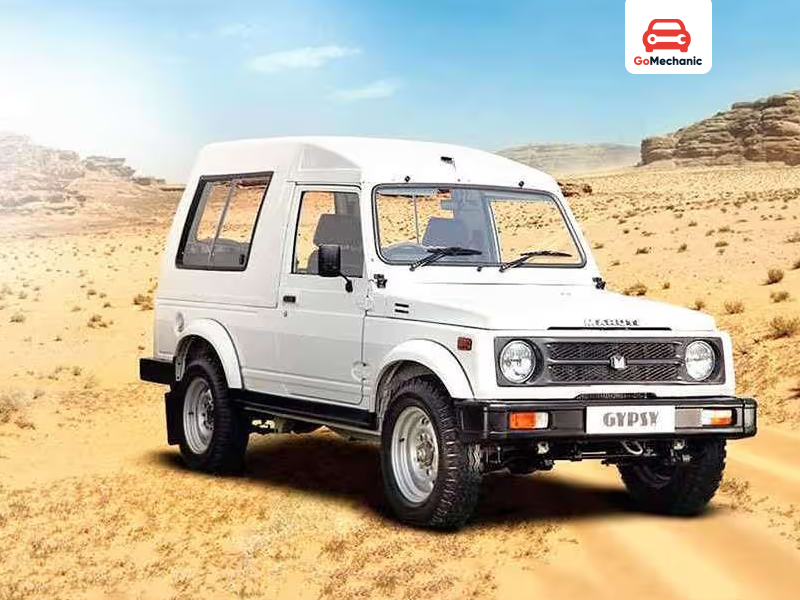
- Light. Reliable. Iconic.
- Engine: 1.3L petrol, 80 hp.
- Drive: 4×4.
- Capacity: Eight personnel.
- Top Speed: 120 km/h.
This vehicle is synonymous with the Indian Army. It has climbed mountains, crossed deserts, and survived everything. Though it’s being phased out, the Gypsy will always be remembered.
Try GoMechanic Maruti Suzuki Gypsy Service
The Number Plates: Decoded
Indian Army vehicles don’t have regular plates. They have codes. These codes tell you everything.
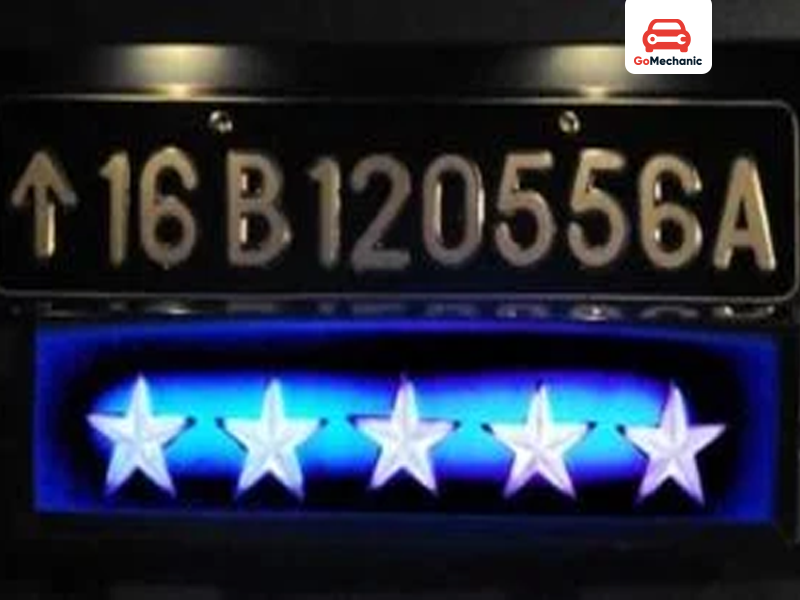
- Arrow (↑): Marks it as army property.
- Year Digits: The year it was bought.
- Class Code: The type of vehicle (e.g., A for light vehicles).
- Serial Number: Its unique identifier.
Example: ↑ 22B 12345
- Bought in 2022.
- Class B (medium vehicle).
- Serial 12345.
How the Army Procures Vehicles
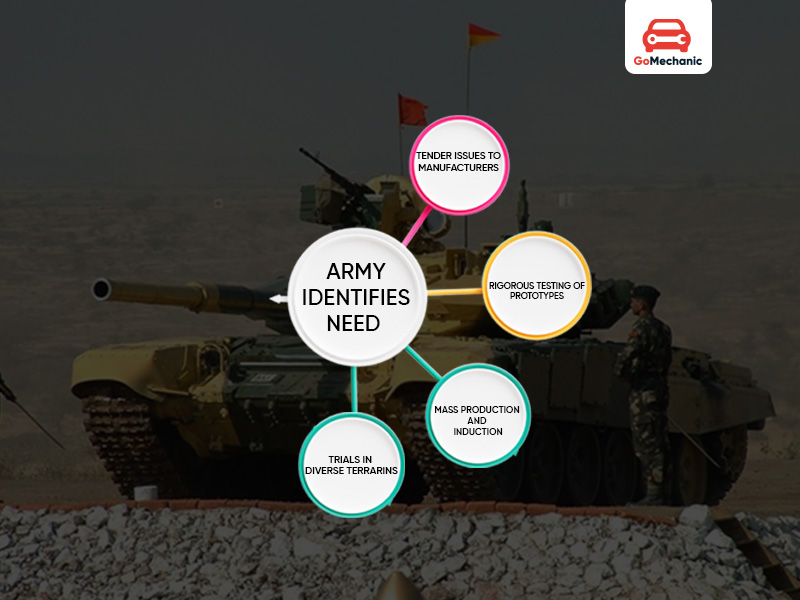
The Indian Army’s procurement process is meticulous and systematic, ensuring every vehicle in its fleet meets stringent operational and environmental requirements. Each step, from identifying the need to mass production, is a journey of rigorous testing and careful evaluation. Here’s how it all unfolds:
How Civilians Can Buy Army Vehicles
Decommissioned army vehicles are sold through government auctions. Here’s how you can own one:
- Check Auctions:
- Visit MSTC Limited or government tender portals.
- Register:
- Create an account. Pay the participation fee.
- Bid:
- Vehicles are sold to the highest bidder.
- Post-Purchase:
- Get a No Objection Certificate (NOC).
- Re-register the vehicle for civilian use.
The Future: Where the Army is Heading
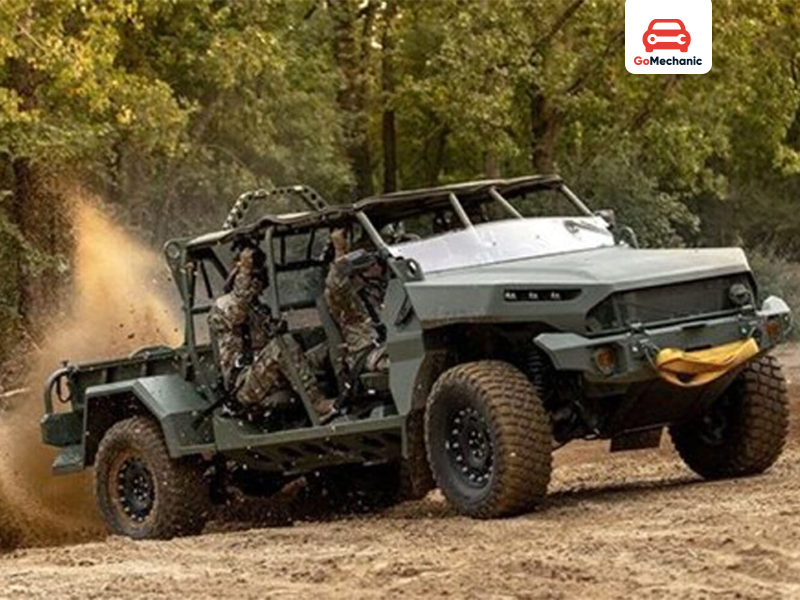
- Electric Vehicles (EVs):
- Non-combat EVs for administrative use.
- Autonomous Vehicles:
- AI-powered logistics and reconnaissance vehicles.
- Hybrid Systems:
- Reduced fuel dependency. Better range.
Conclusion: More Than Machines
These vehicles aren’t just tools. They’re lifelines. Symbols of strength. Proof of India’s engineering might. When you see one, you see a story. Of resilience. Of innovation. Of the men and women who ride them into danger.
And now, you know their story. All of it.

